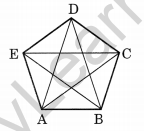NCERT Solutions For Class 6 Maths Understanding Elementary Shapes Ex 5.8
Exercise 5.8
Question 1.
Examine whether the following are polygons. If any one among them is not, say why?
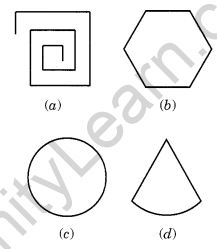
Solution:
(a) The given figure is not closed. Therefore, it is not a polygon.
(b) The given figure is a polygon.
(c) The given figure is not a polygon because every polygon is enclosed with line segments.
(d) The given figure is not a polygon because it is enclosed by an arc and two line segments.
Question 2.
Name the polygon.
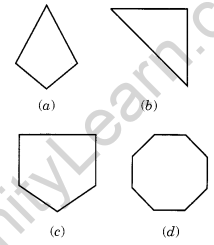
Make two more examples of each of these.
Solution:
(a) A quadrilateral Examples:
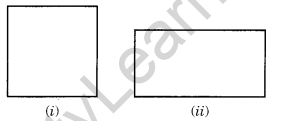
(b) A Triangle
Examples:
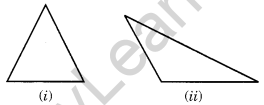
(c) A Pantagon
Examples:
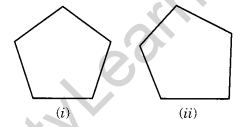
(d) A Octagon
Examples:
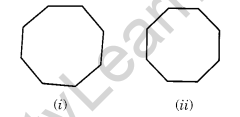
Question 3.
Draw a rough sketch of a regular hexagon. Connecting any three of its vertices, draw a triangle. Identify the type of the triangle you have drawn.
Solution:
ABCDEF is a rough sketch of a regular hexagon. If we join any three vertices like D, A and B, we get a scalene triangle DAB.
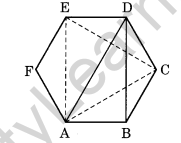
But if we join the alternate vertices, we get an equilateral triangle EAC.
Question 4.
Draw a rough sketch of a regular octagon. (Using squared paper if you wish). Draw a rectangle by joining exactly four of the vertices of the octagon.
Solution:
ABCDEFGH is a rough sketch of regular octagon. GHCD is the rectangle formed by joining the four vertices of the given octagon.
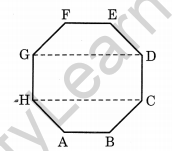
Question 5.
A diagonal is a line segment that joins any two vertices of the polygon and is not a side of the polygon. Draw a rough sketch of a pentagon and draw its diagonals.
Solution:
A B C D E is the rough sketch of a pentagon.
By joining its any two vertices, we get, the following diagonals.
\(\overline { AD }\) , \(\overline { AC }\) , \(\overline { BE }\) , \(\overline { BD }\) and \(\overline { CE }\)
